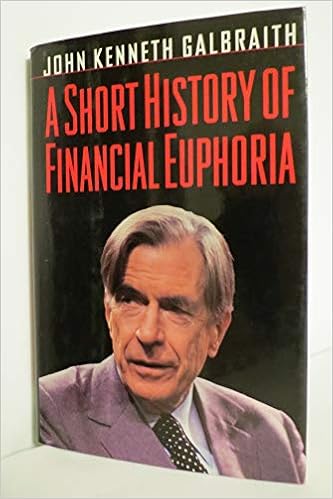
Description
From Publishers Weekly Galbraith's entertaining, wonderfully instructive cautionary essay should be required reading for investors. His focus is "recurrent lapses into financial dementia," reckless speculative episodes fueled by greed, euphoria and investors' delusion that their temporary good fortune is due to their own superior financial acumen. The renowned Harvard economist chronicles a series of "flights into mass insanity," from wild speculation in tulip bulbs in 17th-century Holland through the U.S. stock market crash of 1929, the 1980s mergers-and-acquistions mania and the savings and loan scandal. Comparing these crises, he finds recurring common features, such as evasion of hard realities, new financial instruments presumed to be of stunning novelty and debt that became dangerously out of scale in relation to the underlying means of payment. His proposed remedy is "enhanced skepticism" on the part of investors and the public. Copyright 1993 Reed Business Information, Inc. From Library Journal No matter what your political leanings or economic beliefs might be, there is no denying that Galbraith is a brilliant writer. In this humorous and thoughtful book, he traces the investor "herd" mentality from Tulipomania, which gripped Holland in the 1630s, through a variety of events and up through the 1987 stock market debacle--which he accurately predicted. Galbraith analyzes the crashes that resulted from these speculative episodes, and he points out that the "mass escape from sanity by people in pursuit of profit," which, in his opinion, is always the cause, is never blamed. A truly excellent book, this is highly recommended. - C. Christopher Pavek, Putnam, Hayes & Bartlett, Inc. Information Ctr., Washington, D.C. Copyright 1993 Reed Business Information, Inc. John Kenneth Galbraith is the Paul M. Wartburg Professor of Economics Emeritus at Harvard University. Read more
Features & Highlights
- The world-renowned economist reviews the great speculative episodes of the last three centuries, including the calamitous junk-bond follies of the 1980s, and shows how the lessons of history can help people avoid financial calamity. 40,000 first printing. $40,000 ad/promo.





